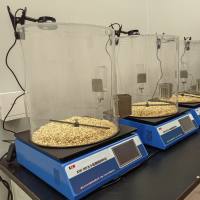Investigating Sleep Homeostasis with Extracellular Recording of Multiunit Activity from the Neocortex in Freely Behaving Rats
互联网
637
Cortical activity during sleep and waking is traditionally investigated with electroencephalography (EEG). The most distinctive
feature of neocortical activity during sleep is the occurrence of EEG slow waves, arising from quasi-synchronous periods of
activity and silence among cortical neurons. The EEG slow waves are regulated homeostatically: they are larger and have a
higher incidence following long waking periods and decrease as a function of time spent asleep. Since intense early sleep
seems to be important for restoration, understanding the cellular mechanisms underlying homeostatic regulation of sleep slow
waves may appear crucial for understanding sleep function. While macrooscillations recorded with the EEG arise from synchronous
activity and silence of large populations of cortical neurons, at present intracellular recording techniques do not allow
monitoring the state of more than just a few cells at a time across spontaneous sleep–wake cycle in unrestrained animals.
Here, we review a method for chronic recording of extracellular LFP and multiunit activity from the neocortex in freely moving
rats. This technique is most useful for addressing cellular mechanisms of sleep homeostasis because it allows monitoring the
activity of many cells simultaneously for many hours. The description of the surgical procedure is complemented with a detailed
account of spike sorting, which is a crucial step in processing and interpreting extracellular waveforms.







